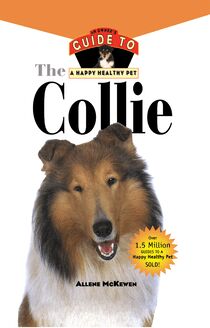-
 Univers
Univers
-
 Ebooks
Ebooks
-
 Livres audio
Livres audio
-
 Presse
Presse
-
 Podcasts
Podcasts
-
 BD
BD
-
 Documents
Documents
-
- Cours
- Révisions
- Ressources pédagogiques
- Sciences de l’éducation
- Manuels scolaires
- Langues
- Travaux de classe
- Annales de BEP
- Etudes supérieures
- Maternelle et primaire
- Fiches de lecture
- Orientation scolaire
- Méthodologie
- Corrigés de devoir
- Annales d’examens et concours
- Annales du bac
- Annales du brevet
- Rapports de stage
La lecture à portée de main
Vous pourrez modifier la taille du texte de cet ouvrage
Découvre YouScribe en t'inscrivant gratuitement
Je m'inscrisDécouvre YouScribe en t'inscrivant gratuitement
Je m'inscrisEn savoir plus
Vous pourrez modifier la taille du texte de cet ouvrage
En savoir plus

Description
PART ONE: Welcome to the World of the Bernese Mountain Dog.
1. What Is a Bernese Mountain Dog?
2. The Bernese Mountain Dog's Ancestry.
3. The World According to the Bernese Mountain Dog.
PART TWO: Living with a Bernese Mountain Dog.
4. Bringing Your Bernese Mountain Dog Home.
5. Feeding Your Bernese Mountain Dog.
6. Grooming Your Bernese Mountain Dog.
7. Keeping Your Bernese Mountain Dog Healthy.
PART THREE: Enjoying Your Dog.
8. Basic Training (Ian Dunbar, Ph.D., MRCVS).
9. Getting Active with Your Dog (Bardi McLennan).
10. Your Dog and Your Family (Bardi McLennan).
11. Your Dog and Your Community (Bardi McLennan).
PART FOUR: Beyond the Basics.
12. Recommended Reading.
13. Resources.
Sujets
Informations
| Publié par | Turner Publishing Company |
| Date de parution | 21 avril 2008 |
| Nombre de lectures | 0 |
| EAN13 | 9780470332214 |
| Langue | English |
| Poids de l'ouvrage | 1 Mo |
Informations légales : prix de location à la page 0,0800€. Cette information est donnée uniquement à titre indicatif conformément à la législation en vigueur.
Extrait
The
Bernese
Mountain Dog
Copyright 2000 by Wiley Publishing, Inc., Hoboken, NJ
Copyright 2000 all photography by Jeannie Harrison
Howell Book House
Published by Wiley Publishing, Inc., Hoboken, NJ All rights reserved. No part of this book may be reproduced or transmitted in any form or by any means, electronic or mechanical, including photocopying, recording, or by an information storage and retrieval system, without permission in writing from the Publisher. No part of this publication may be reproduced, stored in a retrieval system or transmitted in any form or by any means, electronic, mechanical, photocopying, recording, scanning or otherwise, except as permitted under Sections 107 or 108 of the 1976 United States Copyright Act, without either the prior written permission of the Publisher, or authorization through payment of the appropriate per-copy fee to the Copyright Clearance Center, 222 Rosewood Drive, Danvers, MA 01923, (978) 750-8400, fax (978) 646-8600. Requests to the Publisher for permission should be addressed to the Legal Department, Wiley Publishing, Inc., 10475 Crosspoint Blvd., Indianapolis, IN 46256, (317) 572-3447, fax (317) 572-4447, E-Mail: permcoordinator@wiley.com. Trademarks: Wiley, the Wiley Publishing logo, Howell Book House, and related trade dress are trademarks or registered trademarks of John Wiley Sons, Inc. and/or its affiliates. All other trademarks are the property of their respective owners. Wiley Publishing, Inc., is not associated with any product or vendor mentioned in this book. Limit of Liability/Disclaimer of Warranty: While the publisher and author have used their best efforts in preparing this book, they make no representations or warranties with respect to the accuracy or completeness of the contents of this book and specifically disclaim any implied warranties of merchantability or fitness for a particular purpose. No warranty may be created or extended by sales representatives or written sales materials. The advice and strategies contained herein may not be suitable for your situation. You should consult with a professional where appropriate. Neither the publisher nor author shall be liable for any loss of profit or any other commercial damages, including but not limited to special, incidental, consequential, or other damages. For general information on our other products and services, please contact our Customer Care Department within the U.S. at 800-762-2974, outside the U.S. at 317-572-3993 or fax 317-572-4002.
Library of Congress Cataloging-in-Publication Data available upon request from the Publisher.
ISBN 1-58245-162-1
Manufactured in the United States of America 5 4
Book Design: Michele Laseau Cover Design: Iris Jeromnimon External Features Illustration by Shelley Norris Other Illustrations by Jeff Yesh
All photography by Mary Bloom unless otherwise noted.
Joan Balzarini: 96 Mary Bloom: 96, 136, 145 Paulette Braun/Pets by Paulette: 96 Buckinghambill American Cocker Spaniels: 148 Sian Cox: 134 Dr. Ian Dunbar: 98, 101, 103, 111, 116-117, 122, 123, 127 Dan Lyons: 96 Cathy Merrithew: 129 Liz Palika: 133 Susan Rezy: 96-97 Judith Strom: 96, 107, 110, 128, 130, 135, 137, 139,140, 144, 149, 150
Production Team: M. Faunette Johnston, Angel Perez, and Heather Pope
Contents
part one
Welcome to the World of the Bernese Mountain Dog
1 What Is a Bernese Mountain Dog?
2 The Bernese Mountain Dog's Ancestry
3 The World According to the Bernese Mountain Dog
part two
Living with a Bernese Mountain Dog
4 Bringing Your Bernese Mountain Dog Home
5 Feeding Your Bernese Mountain Dog
6 Grooming Your Bernese Mountain Dog
7 Keeping Your Bernese Mountain Dog Healthy
part three
Enjoying Your Dog
8 Basic Training
by Ian Dunbar, Ph.D., MRCVS
9 Getting Active with Your Dog
by Bardi McLennan
10 Your Dog and Your Family
by Bardi McLennan
11 Your Dog and Your Community
by Bardi McLennan
part four
Beyond the Basics
12 Recommended Reading
13 Resources
part one
External Features of the Bernese Mountain Dog
chapter 1
What Is a Bernese Mountain Dog?
The Bernese Mountain Dog attracts attention wherever he goes. A stroll with one of these dogs is often a stop and go session. Everyone you meet will inquire about what kind of dog he is or will jubilantly recognize the breed. With a wagging tail and quick glance for his owner s approval of timeout, a typical Bernese Mountain Dog will greet each person as eagerly as a new star signing autographs. His greatest joy, however, is when a child wants to meet him. There is an almost magical bond between children and Bernese Mountain Dogs.
Absolutely striking in his appearance, the Bernese Mountain Dog is unforgettably beautiful. The vivid, rich black, rust, and white coloration in a pattern of classic markings is the hallmark of the breed. Those unfamiliar with Bernese often venture to guess on seeing their first, Is it a black St. Bernard? When told no and given the name, Bernese Mountain Dog, they frequently repeat it as Burmese, confusing the name with that of the cat which originated in Burma. Bernese Mountain Dogs trace their roots to the Alpine setting of the Canton of Bern in Switzerland. There, they developed as versatile farm dogs, capable of driving livestock, pulling carts, protecting property, and providing companionship. Centuries of such service have produced a remarkable working dog with a keen desire to please and to be with people as the family dog.
It is easy to see why Berners have such a devoted following.
Discovering Bernese Mountain Dogs
The captivating beauty and marvelous temperament of the Bernese Mountain Dog endear him to today s owners, who upon getting to know the breed, wonder why it took them so long to discover it. Proud owners talk enthusiastically about their Berners, a direct reference to the breed s Swiss name, Berner Sennenhunde. Newcomers to the breed find the search for information and chances to meet Berners and their Bernerfolk a rewarding challenge.
Dependent upon geographic location, opportunities to actually see a Bernese Mountain Dog are not always readily available, even at dog shows. For this reason sightings are sometimes as exciting as bird watching. Being highly photogenic, Bernese Mountain Dogs have become quite visible in a variety of advertising media, thus piquing the public s curiousity even further.
Standard of Excellence
To understand any breed, it is essential to become acquainted with the breed s standard as accepted by the American Kennel Club. The definitive profile of the breed standard details the specifications of an ideal specimen and describes the characteristics unique to each breed.
The first Bernese Mountain Dog standard in America was taken from the Swiss standard current at that time. It was adopted in 1937 when the breed was recognized by the American Kennel Club and placed in the Working Group. Each breed s standard is under the guardianship of its parent club thereby enabling those most familiar with a particular breed to make revisions. In 1980 and again in 1990, the Bernese Mountain Dog Club of America, acting in that capacity, proposed revisions to the standard which were voted upon and approved by its nationwide membership prior to submission to the AKC for its approval.
THE AMERICAN KENNEL CLUB
Familiarly referred to as the AKC, the American Kennel Club is a nonprofit organization devoted to the advancement of purebred dogs. The AKC maintains a registry of recognized breeds and adopts and enforces rules for dog events including shows, obedience trials, field trials, hunting tests, lure coursing, herding, earthdog trials, agility and the Canine Good Citizen program. It is a club of clubs, established in 1884 and composed, today, of over 500 autonomous dog breed clubs throughout the United States. Each club is represented by a delegate; the delegates make up the legislative body of the AKC, voting on rules and electing directors. The AKC maintains the Stud Book-the record of every dog ever registered with the AKC-and publishes a variety of materials on purebred dogs, including a monthly magazine, books and numerous educational pamphlets. For more information, contact the AKC at the address listed in Chapter 13, Resources, and look for the names of their publications in Chapter 12, Recommended Reading.
A brief exploration of some of the expectations described in the present standard will serve for better understanding the Bernese Mountain Dog. Quotations from the standard are italicized, and the author s comments follow. To obtain a copy of the official standard, write to the American Kennel Club, 5580 Centerview Drive, Suite 200, Raleigh, NC 27606.
General Appearance
The Bernese Mountain Dog is a striking, tri-colored, large dog. He is sturdy and balanced. He is intelligent, strong and agile enough to do the draft and droving work for which he was used in the mountainous regions of his origin.
This passage describes the total dog. The components creating the Bernese Mountain Dog s striking beauty are his coat and markings in combination with a harmonious blend of strength, size, substantial structure, and impressive demeanor. He must look physically capable of fulfilling the breed s original purpose of pulling loaded carts and driving livestock in the rugged terrain of Switzerland.
Dogs appear masculine, while bitches are distinctly feminine.
While both males and females have the striking characteristics of the breed, males are quite commanding in appearance, having a more massive body, broader head, and heavier coat than females. The majesty of the male is softly mirrored in the female, making it relatively easy to distinguish the sexes. When comparing the overall impression of males and females, it is important to consider age and relative maturity.
S IZE , P ROPORTION , S UBSTANCE
Measured at the withers, dogs are 25 to 27 inches; bitches are 23 to 26 inches. Though appe
-
 Univers
Univers
-
 Ebooks
Ebooks
-
 Livres audio
Livres audio
-
 Presse
Presse
-
 Podcasts
Podcasts
-
 BD
BD
-
 Documents
Documents
-
Jeunesse
-
Littérature
-
Ressources professionnelles
-
Santé et bien-être
-
Savoirs
-
Education
-
Loisirs et hobbies
-
Art, musique et cinéma
-
Actualité et débat de société
-
Jeunesse
-
Littérature
-
Ressources professionnelles
-
Santé et bien-être
-
Savoirs
-
Education
-
Loisirs et hobbies
-
Art, musique et cinéma
-
Actualité et débat de société
-
Actualités
-
Lifestyle
-
Presse jeunesse
-
Presse professionnelle
-
Pratique
-
Presse sportive
-
Presse internationale
-
Culture & Médias
-
Action et Aventures
-
Science-fiction et Fantasy
-
Société
-
Jeunesse
-
Littérature
-
Ressources professionnelles
-
Santé et bien-être
-
Savoirs
-
Education
-
Loisirs et hobbies
-
Art, musique et cinéma
-
Actualité et débat de société
- Cours
- Révisions
- Ressources pédagogiques
- Sciences de l’éducation
- Manuels scolaires
- Langues
- Travaux de classe
- Annales de BEP
- Etudes supérieures
- Maternelle et primaire
- Fiches de lecture
- Orientation scolaire
- Méthodologie
- Corrigés de devoir
- Annales d’examens et concours
- Annales du bac
- Annales du brevet
- Rapports de stage













